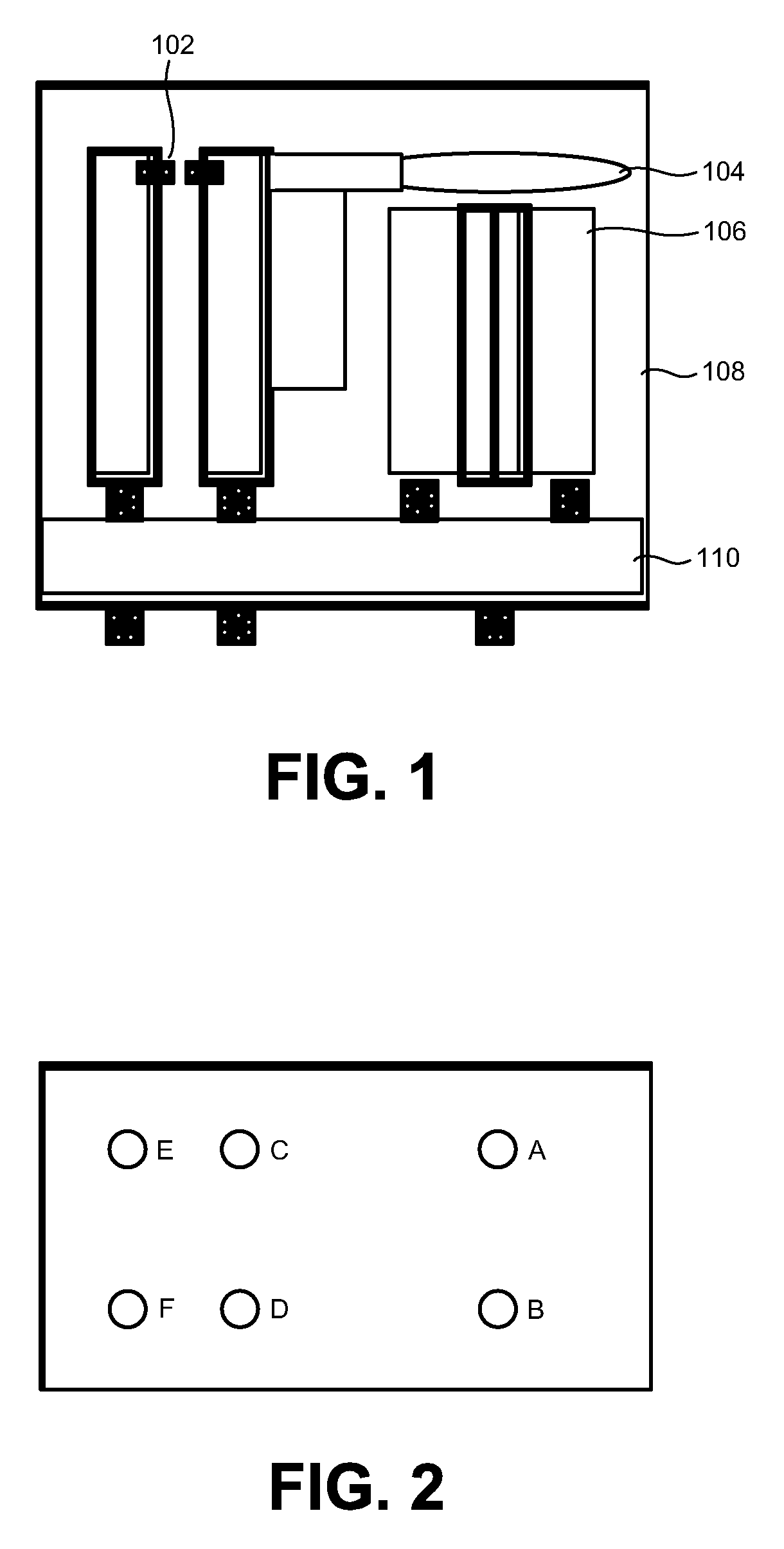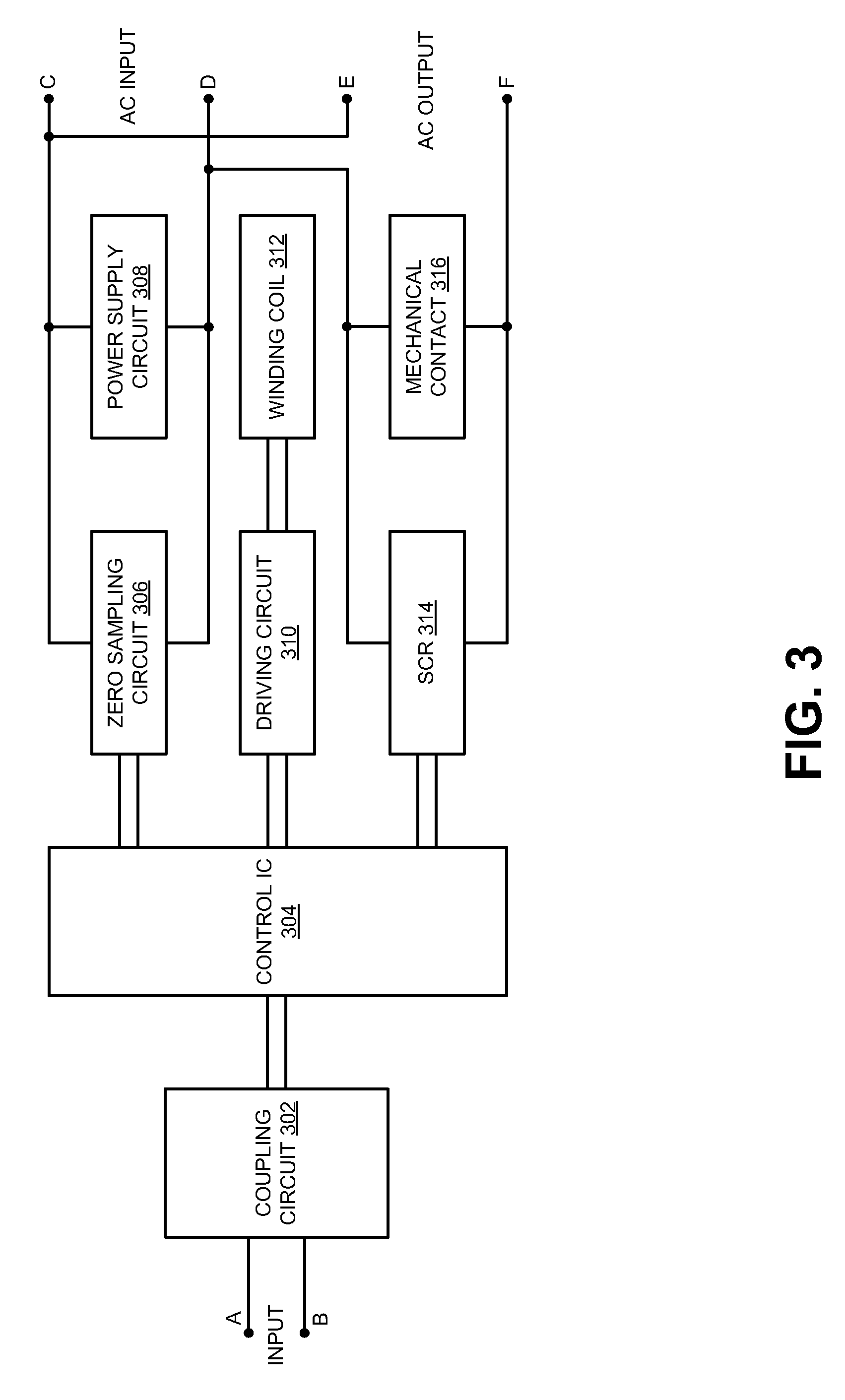Electromechanical and solid-state AC relay with reduced arcing
a technology of arcing and arcing, applied in the field of alternating-current (ac) relays, can solve the problems of large electromagnetic interference (emi), difficult to turn the emr on and off at the zero-crossing of the ac current, and more complex alternating-current relays
- Summary
- Abstract
- Description
- Claims
- Application Information
AI Technical Summary
Benefits of technology
Problems solved by technology
Method used
Image
Examples
Embodiment Construction
[0017]The present invention relates to an improvement in AC relays. The following description is presented to enable one of ordinary skill in the art to make and use the invention as provided in the context of a particular application and its requirements. Various modifications to the preferred embodiment will be apparent to those with skill in the art, and the general principles defined herein may be applied to other embodiments. Therefore, the present invention is not intended to be limited to the particular embodiments shown and described, but is to be accorded the widest scope consistent with the principles and novel features herein disclosed.
[0018]The inventors have realized the desirability of a solution to the technical problem of the low reliability of electromechanical relays caused by arcing of the mechanical contacts, and the 1-volt drop of the solid-state relay.
[0019]The electromagnetic relay usually has an iron core, a winding coil, an iron armature, a movable spring wi...
PUM
 Login to View More
Login to View More Abstract
Description
Claims
Application Information
 Login to View More
Login to View More - R&D
- Intellectual Property
- Life Sciences
- Materials
- Tech Scout
- Unparalleled Data Quality
- Higher Quality Content
- 60% Fewer Hallucinations
Browse by: Latest US Patents, China's latest patents, Technical Efficacy Thesaurus, Application Domain, Technology Topic, Popular Technical Reports.
© 2025 PatSnap. All rights reserved.Legal|Privacy policy|Modern Slavery Act Transparency Statement|Sitemap|About US| Contact US: help@patsnap.com



